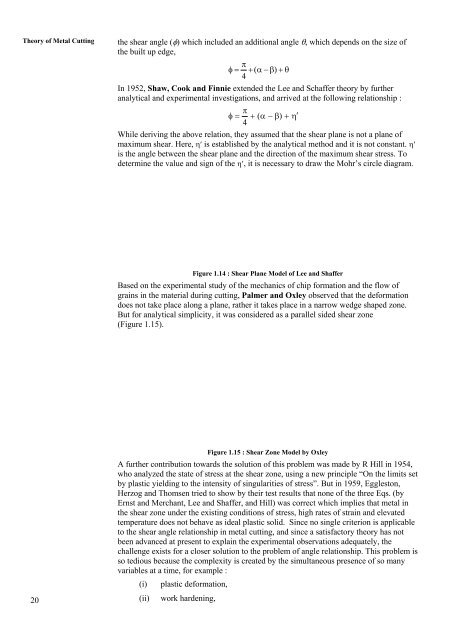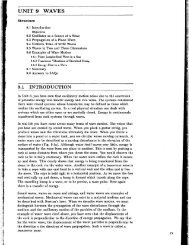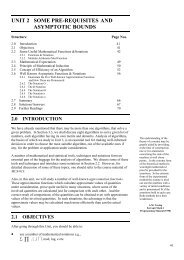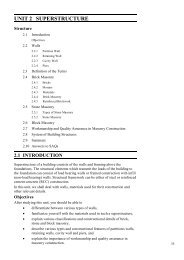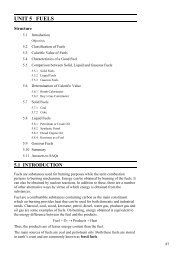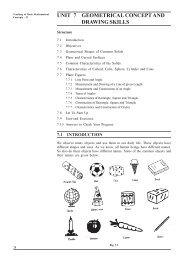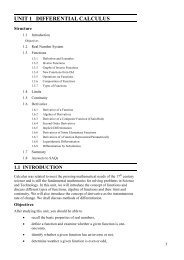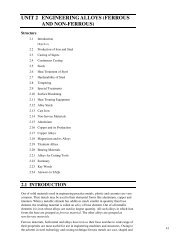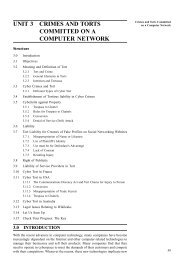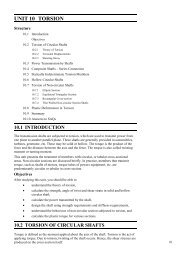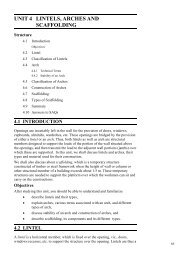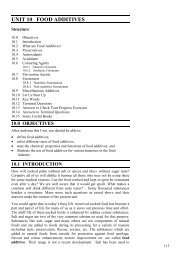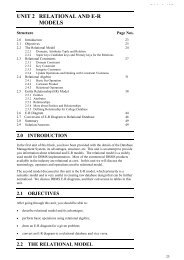unit 1 metal cutting and chip formation - IGNOU
unit 1 metal cutting and chip formation - IGNOU
unit 1 metal cutting and chip formation - IGNOU
Create successful ePaper yourself
Turn your PDF publications into a flip-book with our unique Google optimized e-Paper software.
Theory of Metal Cutting<br />
20<br />
the shear angle (φ) which included an additional angle θ, which depends on the size of<br />
the built up edge,<br />
π<br />
φ = + ( α − β)<br />
+ θ<br />
4<br />
In 1952, Shaw, Cook <strong>and</strong> Finnie extended the Lee <strong>and</strong> Schaffer theory by further<br />
analytical <strong>and</strong> experimental investigations, <strong>and</strong> arrived at the following relationship :<br />
π<br />
φ = + ( α −β ) + η ′<br />
4<br />
While deriving the above relation, they assumed that the shear plane is not a plane of<br />
maximum shear. Here, η′ is established by the analytical method <strong>and</strong> it is not constant. η′<br />
is the angle between the shear plane <strong>and</strong> the direction of the maximum shear stress. To<br />
determine the value <strong>and</strong> sign of the η′, it is necessary to draw the Mohr’s circle diagram.<br />
Figure 1.14 : Shear Plane Model of Lee <strong>and</strong> Shaffer<br />
Based on the experimental study of the mechanics of <strong>chip</strong> <strong>formation</strong> <strong>and</strong> the flow of<br />
grains in the material during <strong>cutting</strong>, Palmer <strong>and</strong> Oxley observed that the de<strong>formation</strong><br />
does not take place along a plane, rather it takes place in a narrow wedge shaped zone.<br />
But for analytical simplicity, it was considered as a parallel sided shear zone<br />
(Figure 1.15).<br />
Figure 1.15 : Shear Zone Model by Oxley<br />
A further contribution towards the solution of this problem was made by R Hill in 1954,<br />
who analyzed the state of stress at the shear zone, using a new principle “On the limits set<br />
by plastic yielding to the intensity of singularities of stress”. But in 1959, Eggleston,<br />
Herzog <strong>and</strong> Thomsen tried to show by their test results that none of the three Eqs. (by<br />
Ernst <strong>and</strong> Merchant, Lee <strong>and</strong> Shaffer, <strong>and</strong> Hill) was correct which implies that <strong>metal</strong> in<br />
the shear zone under the existing conditions of stress, high rates of strain <strong>and</strong> elevated<br />
temperature does not behave as ideal plastic solid. Since no single criterion is applicable<br />
to the shear angle relationship in <strong>metal</strong> <strong>cutting</strong>, <strong>and</strong> since a satisfactory theory has not<br />
been advanced at present to explain the experimental observations adequately, the<br />
challenge exists for a closer solution to the problem of angle relationship. This problem is<br />
so tedious because the complexity is created by the simultaneous presence of so many<br />
variables at a time, for example :<br />
(i) plastic de<strong>formation</strong>,<br />
(ii) work hardening,


